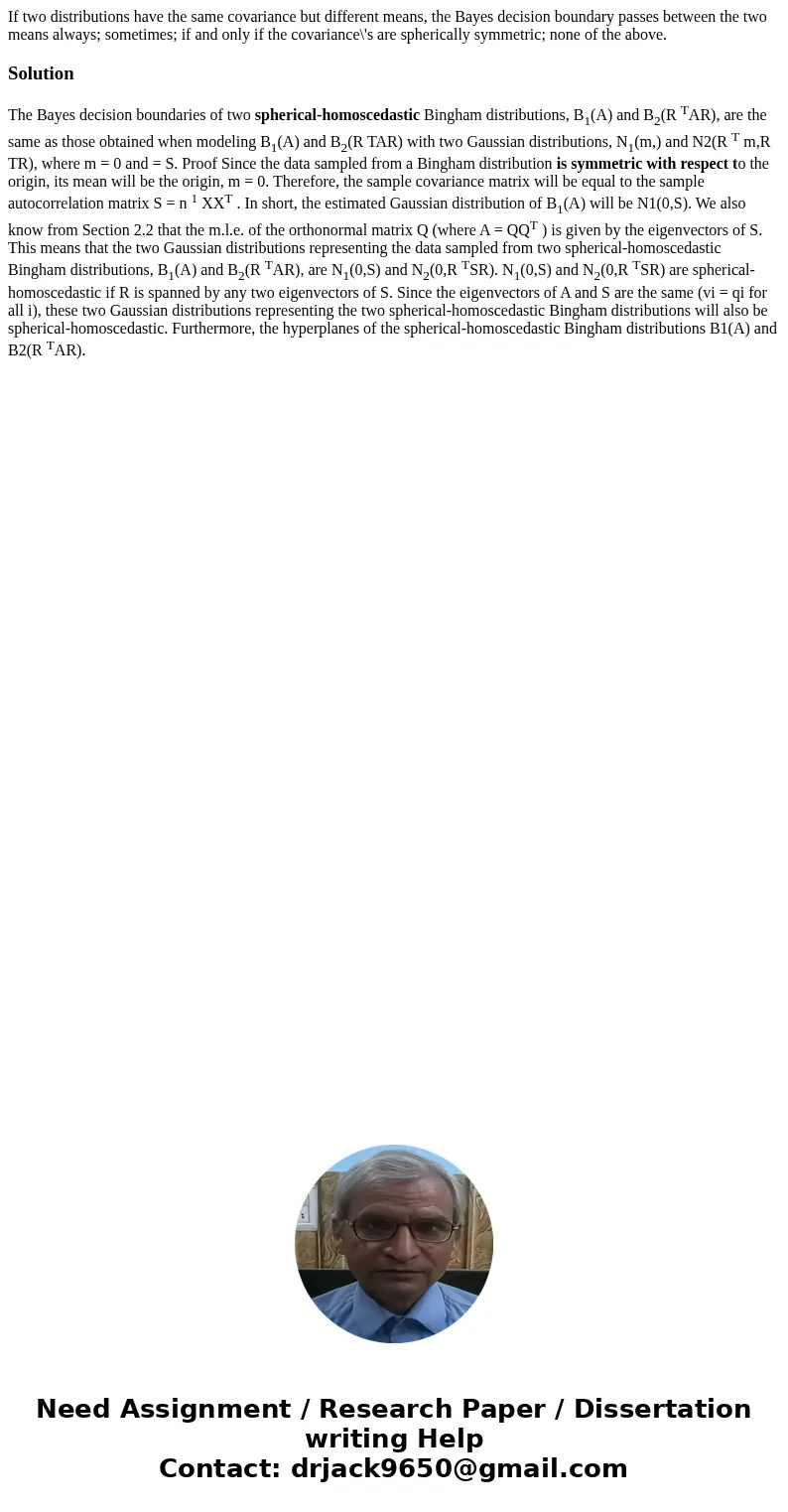If two distributions have the same covariance but different
Solution
The Bayes decision boundaries of two spherical-homoscedastic Bingham distributions, B1(A) and B2(R TAR), are the same as those obtained when modeling B1(A) and B2(R TAR) with two Gaussian distributions, N1(m,) and N2(R T m,R TR), where m = 0 and = S. Proof Since the data sampled from a Bingham distribution is symmetric with respect to the origin, its mean will be the origin, m = 0. Therefore, the sample covariance matrix will be equal to the sample autocorrelation matrix S = n 1 XXT . In short, the estimated Gaussian distribution of B1(A) will be N1(0,S). We also know from Section 2.2 that the m.l.e. of the orthonormal matrix Q (where A = QQT ) is given by the eigenvectors of S. This means that the two Gaussian distributions representing the data sampled from two spherical-homoscedastic Bingham distributions, B1(A) and B2(R TAR), are N1(0,S) and N2(0,R TSR). N1(0,S) and N2(0,R TSR) are spherical-homoscedastic if R is spanned by any two eigenvectors of S. Since the eigenvectors of A and S are the same (vi = qi for all i), these two Gaussian distributions representing the two spherical-homoscedastic Bingham distributions will also be spherical-homoscedastic. Furthermore, the hyperplanes of the spherical-homoscedastic Bingham distributions B1(A) and B2(R TAR).

 Homework Sourse
Homework Sourse